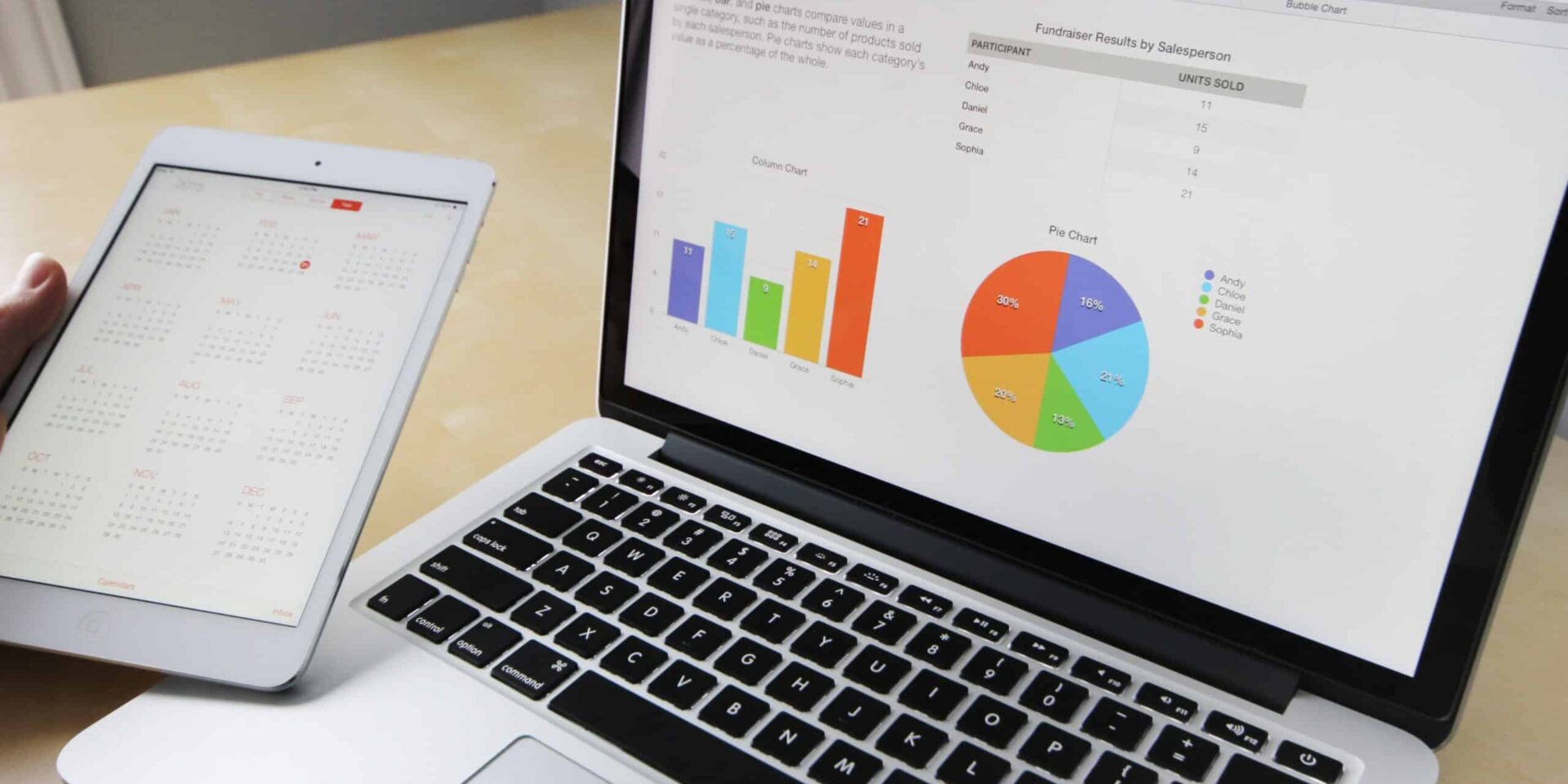In the dynamic business world, navigating the financial waters requires foresight and a steady hand at the helm. While many aspects of a company’s finances demand attention, understanding and predicting cash flows are crucial for sustainable business operations. Imagine driving a car with a foggy windshield; without clarity, the likelihood of an accident increases exponentially. Similarly, in business, without a clear view of incoming and outgoing cash, a company can quickly find itself in precarious situations.
Cash flow, distinct from profit, represents a business’s real-time liquidity and operational health. Whether planning expansions, managing daily operations, or ensuring you can meet financial obligations, a reliable cash flow forecast can be the guiding light amidst potential economic storms. As we delve deeper into cash flow forecasting, we’ll uncover its nuances, importance, and methodologies, offering a blueprint for businesses to remain financially buoyant and informed.
Understanding Cash Flow Forecasting
To grasp the concept of cash flow forecasting, it’s essential first to understand what cash flow itself means. At its core, cash flow represents the movement of money in and out of a business. These inflows and outflows are fundamental to ensuring an organization can operate day-to-day, meet financial obligations, and invest in future growth. Yet, cash flow is distinct from profit, a concept that can sometimes be misconstrued.
Cash Flow vs. Profit
Profit is the leftover revenue after all expenses have been deducted from a company’s sales. A business can be profitable while simultaneously facing cash flow issues. For instance, if a company sold a product today and the payment is deferred to a later date, the business might record a profit but won’t have the cash. According to a U.S. Bank study, 82% of companies fail because of cash flow problems.
What is Cash Flow Forecasting?
Cash flow forecasting is the process of estimating the future financial inflows and outflows of a business. This prediction can span various durations – from the immediate week or month up to several years into the future. It provides insights into potential cash shortages, allowing businesses to take proactive measures.
The Importance of Historical Data
Historical data plays a pivotal role in cash flow forecasting. A Journal of Business Venturing Insights study found that businesses that employ historical data in their forecasting often enjoy more accurate predictions, allowing for better strategic planning. Companies can detect trends, anticipate challenges, and capitalize on opportunities by analyzing previous cash inflow and outflow patterns.
In summary, cash flow forecasting is a financial exercise and a strategic tool that empowers businesses to navigate unpredictable market waves with confidence and foresight. By comprehending the movements of their economic currents, companies can ensure they stay afloat and thrive in competitive environments.
Purpose and Importance of Cash Flow Forecasting
Cash flow forecasting is a fundamental accounting activity for many strategic purposes. In a volatile economic landscape, where unexpected costs and market shifts are par for the course, cash flow forecasting acts as a beacon, guiding businesses through potentially turbulent financial seas. Here’s a detailed exploration of its significance:
Cash Management and Ensuring Liquidity:
- Liquidity Matters: Businesses need available cash (liquidity) to manage daily operations—from paying wages to buying inventory. A survey by QuickBooks revealed that 69% of small business owners have at some point, been kept up at night due to concerns about cash flow. A proper forecast aids in ensuring there’s always enough cash to cover immediate expenses.
Identifying Potential Financial Shortfalls in Advance:
- The Power of Proactivity: Recognizing potential deficits beforehand allows businesses to make necessary adjustments, such as delaying expenses or seeking additional funding. According to a report by the Federal Reserve, 44% of companies applied for financing due to an expected shortfall in the last fiscal year.
Making Informed Business Decisions:
- Investments & Expansions: Businesses require capital, whether opening a new branch or investing in new technology. An accurate cash flow forecast clearly shows when and how much a company can invest.
- Hiring: A forecast can reveal the right time to hire new employees, ensuring the company has the funds to support additional salaries and benefits without overextending.
Supporting Funding Applications or Investor Pitches:
- Building Credibility: Lenders and investors seek assurances that their money is safe and will yield returns. A thorough cash flow forecast indicates meticulous planning and showcases the business’s potential profitability. A study by CB Insights found that 29% of startups fail because they run out of cash—having a robust cash flow forecast can be a strong argument against this concern during pitches.
Budgeting & Financial Planning:
- Setting Targets: Businesses can set achievable financial targets by forecasting revenues and expenses. This proactive approach aids in avoiding potential overspending.
- Evaluating Financial Health: Regularly comparing the forecasted figures with actual figures allows businesses to gauge their financial accuracy and assess the operation’s overall health.
Mitigating Risks:
- Market Fluctuations & External Factors: Global events, from economic downturns to pandemics, can significantly influence a business’s cash flow. By routinely updating forecasts to account for these factors, companies can adjust strategies to mitigate potential impacts. A recent study by McKinsey emphasized that companies that adapted their cash flow strategies during the COVID-19 pandemic were 45% more likely to project a return to pre-pandemic operations within a year.
In conclusion, cash flow forecasting is not just about numbers on a spreadsheet—it’s about foresight, adaptability, and strategic maneuvering in the face of opportunities and challenges. With an effective cash flow forecast, businesses can secure their financial foundations, ensuring they survive and thrive in the ever-evolving marketplace.
Key Components of a Cash Flow Forecast
Diving into the mechanics of a cash flow forecast requires an understanding of its foundational elements. Each component offers a snapshot of a specific segment of a business’s financial movement. When woven together, these granular insights provide a comprehensive view of the company’s liquidity trajectory. Let’s dissect the integral components:
Inflows:
- Sales or Revenue Projections: The primary source of income for most businesses. However, recognizing the difference between invoiced amounts and received payments is crucial. According to a report by Sage, over 10% of invoices for SMEs remain unpaid past their due dates, highlighting the importance of differentiating projected sales from actual cash inflows.
- Loan Proceeds: The expected inflow from these borrowings becomes vital for businesses leveraging loans. In the U.S., as per the Small Business Credit Survey, approximately 47% of small businesses applied for financing in 2020.
- Asset Sales: This refers to anticipated revenue from disposing of assets, whether equipment, property, or other holdings. For example, according to a Deloitte survey, nearly 15% of businesses consider selling assets to maintain liquidity during a financial downturn.
- Investment Income: Interest or dividends from financial holdings fall under this category. It’s estimated that, in the S&P 500, dividend payments to investors amounted to about $485 billion in 2019.
Outflows:
- Operating Expenses: These recurring costs, such as salaries, utilities, and rent, are vital to maintain day-to-day operations. On average, salaries and wages alone can constitute up to 70% of a company’s operating expenses, based on a PwC report.
- Loan Repayments: Money owed to creditors and lenders. The Federal Reserve notes that the median monthly loan repayment of businesses with outstanding debt amounts to $6,100.
- Purchases: Investments in stock, machinery, or other business essentials. Tracking both regular purchasing patterns and larger, one-off investments is essential.
- Taxes: A substantial outflow for businesses. The Tax Foundation reported that U.S. corporations paid $230.2 billion in income taxes in 2019.
Net Cash Flow:
- This vital figure is the difference between inflows and outflows. Positive net cash flow indicates a surplus, while a negative figure signals a deficit for the forecasted period. A Harvard Business Review study underscored that companies with consistent positive net cash flow are 60% more likely to outperform competitors in the long run.
Opening and Closing Cash Balance:
- Opening Cash Balance: Represents the available cash at the beginning of the forecast period. It’s the foundation on which the period’s transactions are based.
- Closing Cash Balance: The projected cash amount at the end of the forecasting period. This indicates the expected liquidity position and sets the stage for the next period’s opening balance.
A cash flow forecast’s efficacy lies in the accuracy and comprehensiveness of these components. To ensure these figures remain relevant, businesses must regularly update them, accounting for market shifts, unforeseen expenses, and changes in revenue patterns. With these components acting as the pillars, a cash flow forecast becomes an indispensable tool for financial clarity and strategic navigation.
Steps to Create a Cash Flow Forecast
Constructing a cash flow forecast is like crafting a roadmap for your business’s financial journey. A well-executed forecast illuminates potential challenges and opportunities, allowing businesses to navigate with precision and foresight. Here’s a detailed walkthrough of the process:
1. Determine the Forecasting Period:
- Short vs. Long-Term: Your business needs and the nature of your industry will dictate whether you require weekly, monthly, or yearly projections. For instance, retail businesses with seasonal fluctuations might benefit from weekly or monthly forecasts. The U.S. Small Business Administration recommends that startups maintain a 12-month forecast to plan for initial fluctuations adequately.
2. List and Estimate All Expected Cash Inflows:
- Diverse Revenue Streams: Beyond just sales, identify all potential sources of income. This might include asset sales, returns on investments, or loan proceeds.
- Use Historical Data: According to a report by Financial Management, businesses that leverage past revenue trends in forecasting experience a 35% improvement in forecast accuracy.
3. List and Estimate All Expected Cash Outflows:
- Fixed vs. Variable Costs: While some costs, like rent or salaries, remain relatively stable, others, like utilities or raw materials, can fluctuate. Ensure you account for both in your forecast.
- Plan for Unexpected Expenditures: A study by JP Morgan Chase indicates that over 60% of businesses face unforeseen expenses yearly. Building in a buffer for such scenarios ensures resilience.
4. Calculate the Net Cash Flow for Each Period:
- Determine Liquidity: By subtracting the expected outflows from the inflows, you’ll gain insights into your business’s liquidity stance for each period within the forecast. A survey by Business.org revealed that businesses with regular positive net cash flow are 70% more likely to expand within five years.
5. Reconciliation with Actual Figures:
- Regular Updates: As each period ends, compare your forecasted figures with the actual numbers. This ensures that the next forecast is more accurate and helps identify patterns or anomalies.
- Iterative Refinement: Data from CFO Magazine suggests that companies that regularly reconcile and update their forecasts reduce financial discrepancies by up to 50%.
6. Continuously Monitor External Factors:
- Market Dynamics: Stay abreast of industry trends, economic indicators, and potential market shifts that could impact your cash flow. According to a National Small Business Association report, 40% of businesses believe external economic factors are the most influential determinants of their cash flow.
- Adjust Forecast Accordingly: With the fast-paced nature of today’s global economy, it’s essential to adjust forecasts based on new information, ensuring that the predictions remain relevant.
7. Use Tools and Software:
- Leverage Technology: Modern cash flow forecasting software offers dynamic insights, automatic reconciliations, and predictive analytics. Research by Capterra highlights that businesses using dedicated forecasting tools see a 20% improvement in their accuracy.
In essence, a cash flow forecast is a living, breathing document. Continual refinement and vigilance ensure it remains a valuable instrument in a business’s financial toolkit. By understanding where your cash is coming from and where it’s going, businesses can make informed, proactive decisions, ensuring sustainability and growth in an unpredictable business environment.
Common Challenges in Cash Flow Forecasting and How to Overcome Them
Mastering the art of cash flow forecasting isn’t without its hurdles. Even the most seasoned financial professionals can encounter pitfalls that skew projections and impact business decision-making. By identifying these challenges and implementing strategies to counteract them, businesses can optimize the accuracy and utility of their forecasts. Let’s delve into some prevalent challenges and their solutions:
Volatile Revenue Streams:
- The Challenge: Prevalent in startups or industries prone to seasonality, unpredictable revenue can render forecasting daunting. For example, the hospitality industry sees wide variations in income depending on peak tourist seasons, holidays, and events.
- The Solution: Businesses should develop flexible models that accommodate this variability, possibly through scenario-based forecasting. As per a study by Financial Executives International, 45% of businesses have adopted scenario-based forecasting to address revenue unpredictability.
Overly Optimistic Projections:
- The Challenge: It’s a natural inclination for businesses to lean into optimism, especially in growth phases. However, this can lead to projections that are more aspirational than realistic.
- The Solution: Ensure objectivity by grounding forecasts in historical data. Third-party reviews or leveraging financial consultants can also provide unbiased insights. According to the Association for Financial Professionals, external reviews can improve forecast accuracy by up to 30%.
Inaccurate Historical Data:
- The Challenge: Past data might be misrepresentative due to anomalies like one-off sales, unprecedented market disruptions, or data-entry errors.
- The Solution: Regularly audit financial statements and databases to ensure accuracy. Additionally, businesses should identify and account for anomalies when using historical data. A survey by Gartner found that companies that continuously cleanse and validate their historical data reduce forecast errors by an average of 25%.
Failure to Update Regularly:
- The Challenge: As the business landscape evolves, sticking to outdated forecasts can mislead decision-making.
- The Solution: Develop a schedule for regular reviews and updates. Automated forecasting tools can flag significant discrepancies between forecasted and actual figures. Incorporating real-time data analytics can refine accuracy, with MIT research suggesting that real-time data utilization can improve forecast reliability by up to 40%.
Overlooking External Factors:
- The Challenge: External factors, from global economic downturns to regional regulations, can significantly influence a business’s financial health. These can often be overlooked in insular forecasting models.
- The Solution: Stay informed on broader market and economic trends. Regular SWOT (Strengths, Weaknesses, Opportunities, Threats) analyses can help businesses anticipate and adapt to external challenges. A Harvard Business Review study posited that businesses that account for external factors in their forecasting exhibit 50% greater resilience to market disruptions.
Lack of Expertise or Resources:
- The Challenge: Especially prevalent in smaller businesses, there might be a lack of in-house expertise to create and maintain accurate forecasts.
- The Solution: Consider investing in training for existing staff or leveraging external consultants. With the growth of SaaS, numerous affordable cash flow forecasting tools have emerged, catering specifically to SMEs. Data from FinancesOnline reveals that 65% of small businesses have incorporated some form of financial software to bolster their forecasting capabilities.
While the road to impeccable cash flow forecasting might be strewn with challenges, they are not insurmountable. With diligence, the right tools, and an objective approach, businesses can harness the full potential of cash flow forecasts, ensuring they remain poised to capitalize on opportunities and mitigate risks in the financial landscape.
Conclusion: The Imperative of Cash Flow Forecasting in Modern Business
In an ever-evolving business landscape characterized by unprecedented opportunities and unpredictable challenges, cash flow forecasting emerges not as a mere financial exercise but a strategic imperative.
The importance of cash flow forecasting cannot be overstated. Like a beacon in the often tumultuous seas of business finance, it illuminates the path ahead. While it requires diligence, accuracy, and regular updating, the rewards for financial stability, informed decision-making, and sustained growth are unparalleled.
In the end, a comprehensive cash flow forecast is more than just numbers on a spreadsheet; it’s a reflection of a business’s financial health, ambition, and its commitment to a sustainable future.




